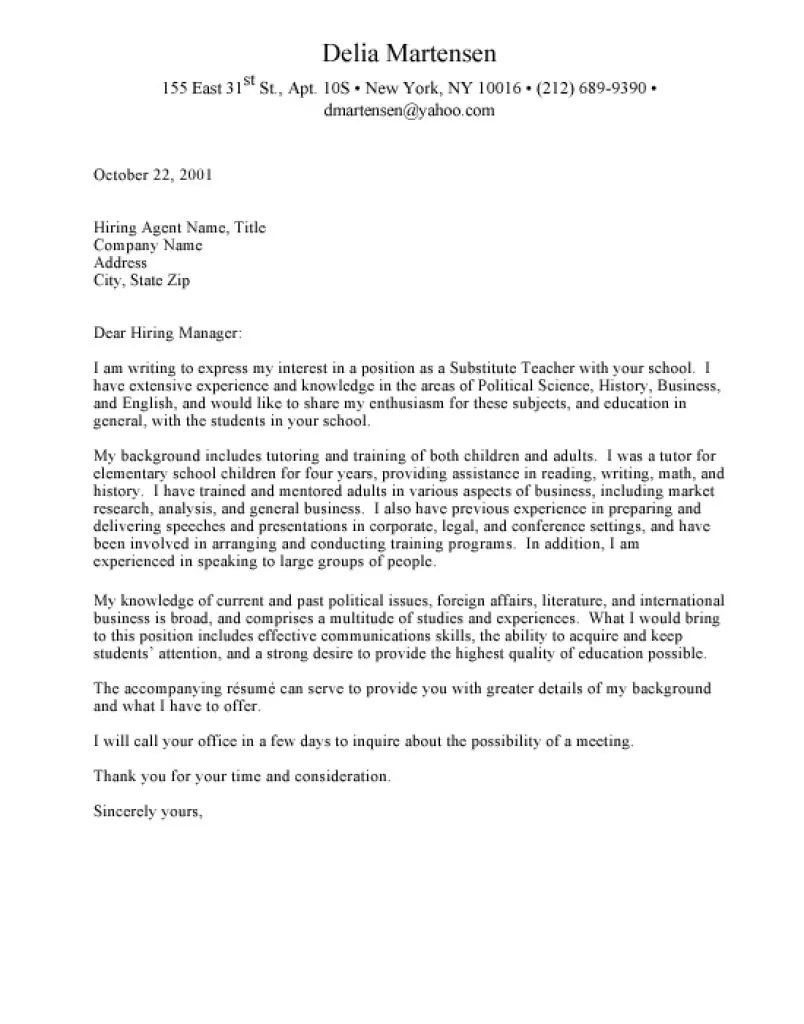Crafting the Perfect Faculty Job Cover Letter
Securing a faculty position is a significant career milestone, and your cover letter serves as your primary introduction to the hiring committee. It’s not merely a formality; it’s a crucial marketing document that showcases your qualifications, expertise, and potential contributions to the institution. A well-crafted cover letter can significantly increase your chances of landing an interview and ultimately, the job. This guide will walk you through every aspect of creating a compelling cover letter that sets you apart from the competition and highlights your suitability for the role.
Understanding the Purpose and Importance
The primary purpose of a faculty job cover letter is to persuade the search committee that you are the best candidate for the position. It’s an opportunity to present a narrative that complements your curriculum vitae (CV), highlighting your most relevant achievements and aligning them with the specific requirements of the job. The cover letter allows you to demonstrate your communication skills, enthusiasm, and understanding of the institution’s needs. It’s not just a summary of your CV; it’s a persuasive argument for why you deserve an interview.
Why a Strong Cover Letter Matters
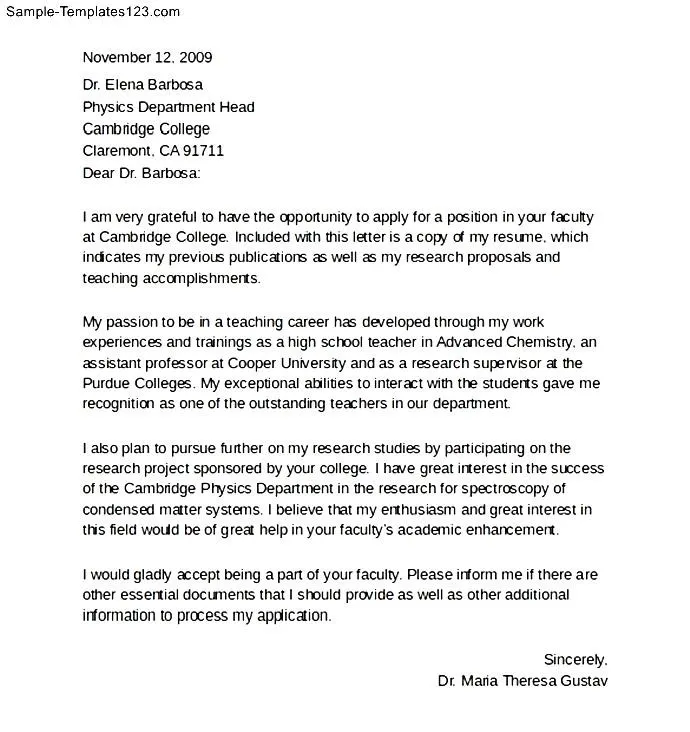
A strong cover letter can be the deciding factor in whether your application is considered seriously. It provides context to your CV, explaining the significance of your accomplishments and how they relate to the specific job requirements. A well-written letter demonstrates your attention to detail, your ability to communicate effectively, and your understanding of the institution’s goals. Furthermore, it allows you to address any potential weaknesses in your application or gaps in your experience. In a competitive field, a strong cover letter can make the difference between getting noticed and being overlooked.
Key Components of a Faculty Cover Letter
A successful faculty job cover letter comprises several key components. Each part plays a vital role in conveying your suitability for the position and making a positive impression on the search committee. These elements should be seamlessly integrated to create a cohesive and compelling narrative that highlights your strengths and demonstrates your understanding of the role and the institution.
Contact Information and Salutation
Begin with your contact information, including your name, address, phone number, and email address. Directly below this, address the letter to the appropriate person. If possible, identify the hiring committee chair or the specific person listed in the job advertisement. Addressing the letter to a specific individual demonstrates that you have taken the time to research the department and shows your attention to detail. Use a professional salutation, such as “Dear Dr. [Last Name]” or “Dear Professor [Last Name].”
Highlighting Your Research and Publications
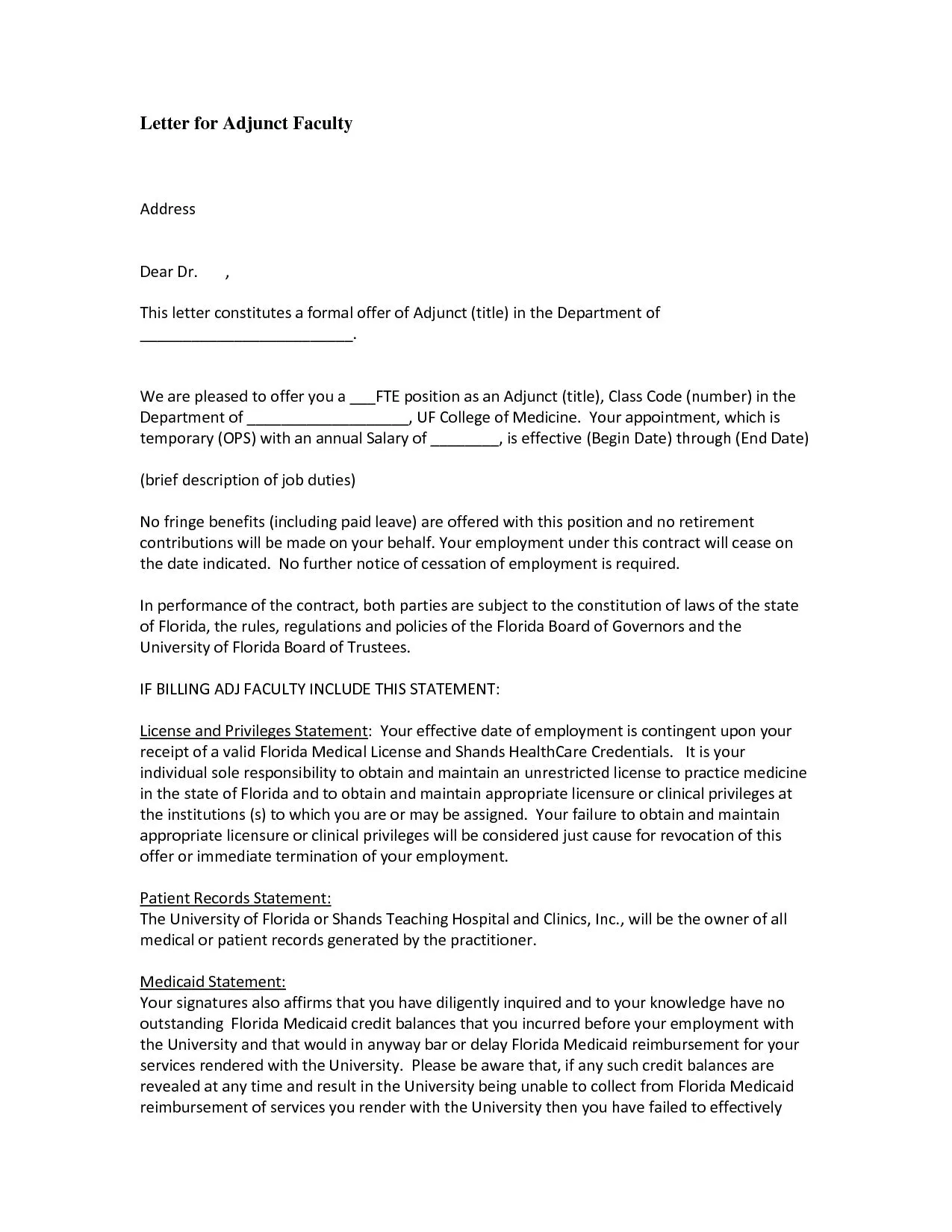
The research section is crucial, particularly for positions at research-intensive universities. Highlight your most significant research accomplishments, including publications, grants, and presentations. Briefly describe your research interests, methodologies, and contributions to your field. Mention any awards, fellowships, or recognition you have received. Quantify your achievements whenever possible. For instance, mention the number of publications, the impact factor of the journals, or the amount of grant funding you have secured. Frame your research in the context of the specific job requirements, demonstrating how your work aligns with the department’s research priorities.
Demonstrating Teaching Experience
If the faculty position involves teaching, your cover letter should clearly articulate your teaching experience and philosophy. Describe the courses you have taught, the levels of students you have instructed, and the teaching methodologies you employ. Emphasize your ability to engage students, foster a positive learning environment, and effectively convey complex concepts. If you have received any teaching awards or positive student evaluations, be sure to mention them. Showcase your commitment to student success, and explain how your teaching experience aligns with the department’s teaching needs and pedagogical approach.
Showcasing Relevant Skills and Achievements
Beyond research and teaching, highlight other skills and achievements that are relevant to the position. This might include experience in mentoring students, supervising research projects, or contributing to departmental service. Mention any leadership roles you have held, such as committee memberships or program coordination. If the job description specifies particular skills or software proficiency, make sure to include them. Provide concrete examples of how you have utilized these skills to achieve specific outcomes. Tailor this section to the specific requirements and priorities of the job and the institution.
Addressing Specific Requirements of the Job
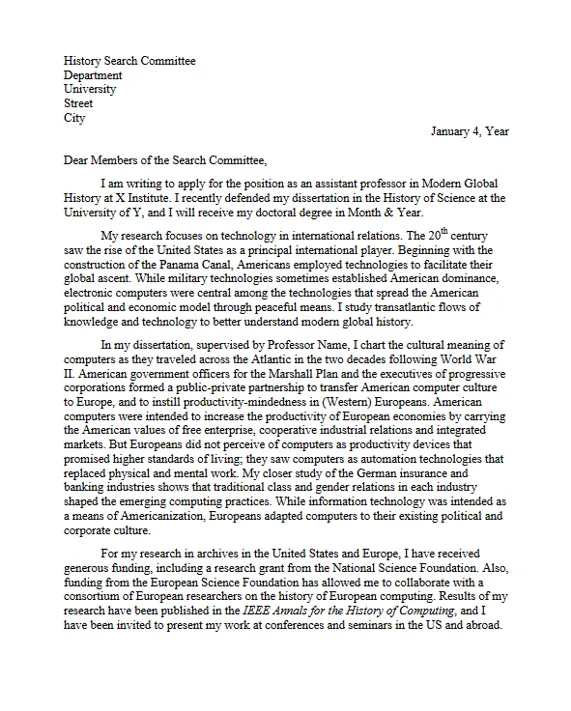
Carefully review the job description and address each of the specific requirements in your cover letter. Explicitly state how your qualifications and experience match the stated needs of the position. This might involve discussing specific research areas, teaching interests, or departmental service expectations. Use the language of the job description to show that you understand the role and the institution’s priorities. By demonstrating a clear understanding of the job requirements, you demonstrate that you are serious about the position and have taken the time to tailor your application to the specific needs of the department.
Formatting Your Cover Letter for Success
The format of your cover letter is crucial for creating a professional and polished impression. The layout, font choice, and overall structure should be easy to read and visually appealing. Proper formatting ensures that your cover letter is accessible and that the key information is easily located by the search committee.
Choosing the Right Font and Font Size
Select a professional and easy-to-read font, such as Times New Roman, Arial, or Calibri. Avoid using overly decorative or unusual fonts, as they can detract from the content and appear unprofessional. Use a font size between 11 and 12 points to ensure readability. Ensure the font size is consistent throughout the letter, including headings and body text. Consistency in font choice and size demonstrates attention to detail and a professional approach.
Structuring Your Letter Logically
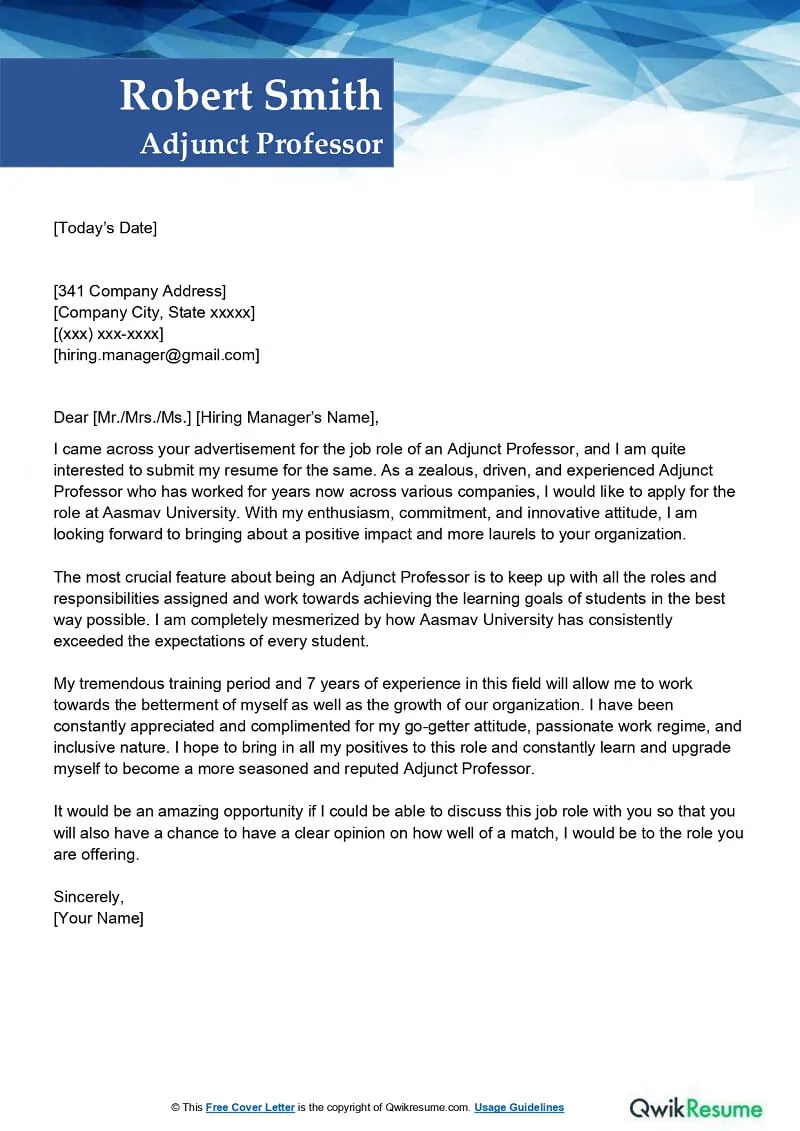
Structure your cover letter logically, with clear paragraphs and headings. Use concise and well-organized paragraphs to present your information. Begin with a strong introduction that states your interest in the position and provides a brief overview of your qualifications. Follow this with sections that highlight your research, teaching experience, and other relevant skills. Use topic sentences to introduce each paragraph and ensure a smooth flow between ideas. End with a strong conclusion that reiterates your interest and expresses your gratitude for the opportunity.
Proofreading and Editing Your Cover Letter
Proofread your cover letter carefully for any grammatical errors, spelling mistakes, and typos. Errors can undermine your credibility and make you appear careless. Use a spell checker and grammar checker, but also read your letter aloud to catch any errors that the software might miss. Ask a colleague, mentor, or friend to review your cover letter and provide feedback. A fresh pair of eyes can often identify mistakes that you might overlook. Ensure that the formatting is consistent and that the letter is free from any formatting errors.
Tailoring Your Letter to the Institution
A generic cover letter will not impress the search committee. To stand out, you must tailor your letter to the specific institution and the particular position. This involves researching the department, the faculty, and the institution’s mission and values. This targeted approach demonstrates your genuine interest and your understanding of the role and the university’s priorities.
Researching the Department and Faculty
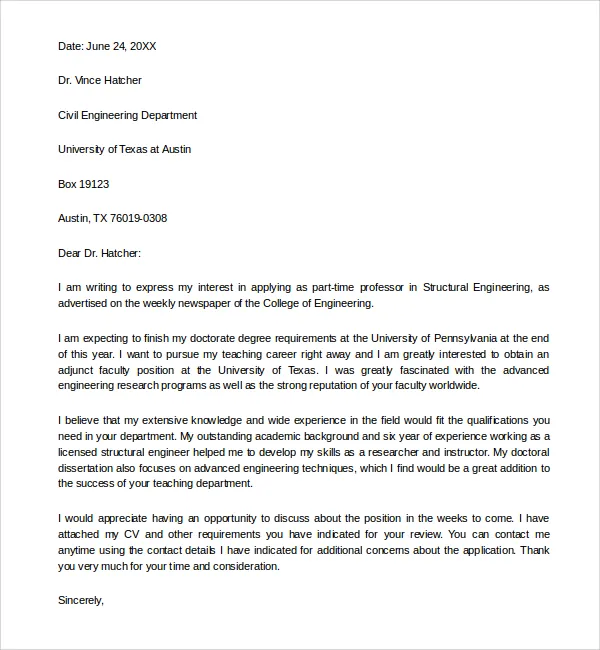
Before writing your cover letter, thoroughly research the department and faculty. Visit the department’s website to learn about the research areas, teaching interests, and ongoing projects. Identify faculty members whose work aligns with your own, and mention their research in your cover letter. This demonstrates that you have taken the time to understand the department’s goals and priorities. Show how your skills and experience will complement and contribute to the department’s existing strengths and future directions. Mentioning specific faculty or research projects shows your genuine interest in joining the department.
Customizing Your Letter for Each Position
Do not use the same cover letter for multiple job applications. Each position is unique, and you should customize your letter to match the specific requirements outlined in the job description. Highlight the skills and experiences that are most relevant to the position. Address the specific needs and priorities of the department. Use the language of the job description to show that you understand the role and the institution’s expectations. Tailoring your cover letter for each position demonstrates your commitment and attention to detail.
Tips for Standing Out from the Crowd
In a competitive job market, it’s important to make your cover letter memorable. Go beyond simply listing your accomplishments and focus on presenting a compelling narrative that captures the attention of the search committee. Use these strategies to make your application stand out from the competition.
Show, Don’t Just Tell
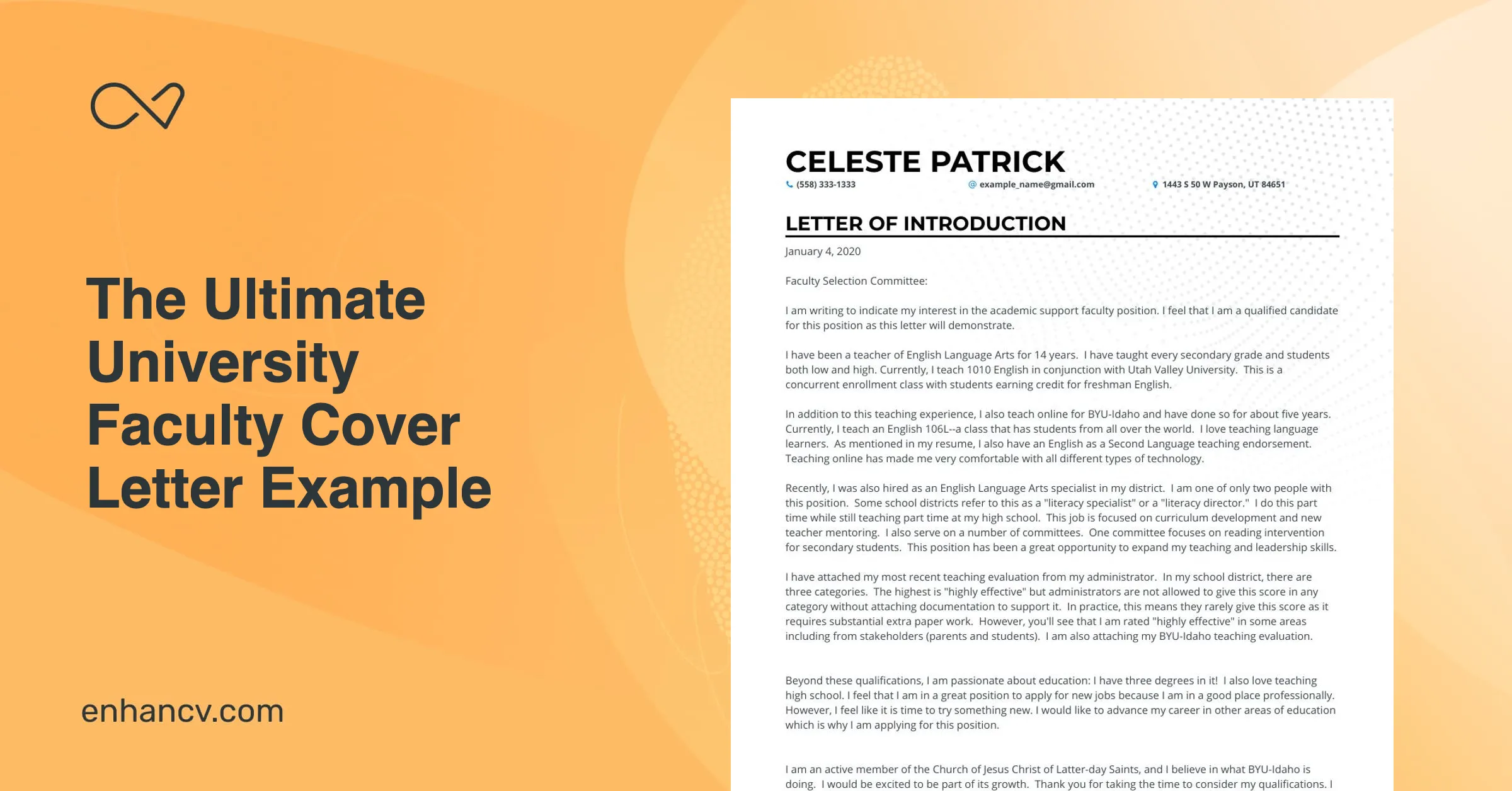
Instead of simply stating your skills and abilities, provide specific examples that demonstrate your achievements. Use the STAR method (Situation, Task, Action, Result) to describe your accomplishments. For example, instead of saying “I have excellent teaching skills,” describe a specific instance where you implemented a new teaching strategy that improved student outcomes. Providing concrete examples makes your claims more credible and memorable.
Quantifying Your Accomplishments
Whenever possible, quantify your accomplishments. Use numbers, percentages, and statistics to demonstrate the impact of your work. For example, instead of saying “I increased student engagement,” state “I increased student engagement by 20% through the implementation of active learning strategies.” Quantifiable results provide concrete evidence of your contributions and make your cover letter more impactful. They also show your ability to measure and evaluate the effectiveness of your work.
Highlighting Your Fit with the Institution’s Culture
Demonstrate that you understand the institution’s mission, values, and culture. Research the institution’s strategic plan, its commitment to diversity and inclusion, and its approach to teaching and research. In your cover letter, explain how your values align with those of the institution. Mention any initiatives or programs that resonate with your own goals and interests. Showing that you are a good fit for the institution’s culture is a significant advantage.
What to Avoid in Your Faculty Cover Letter
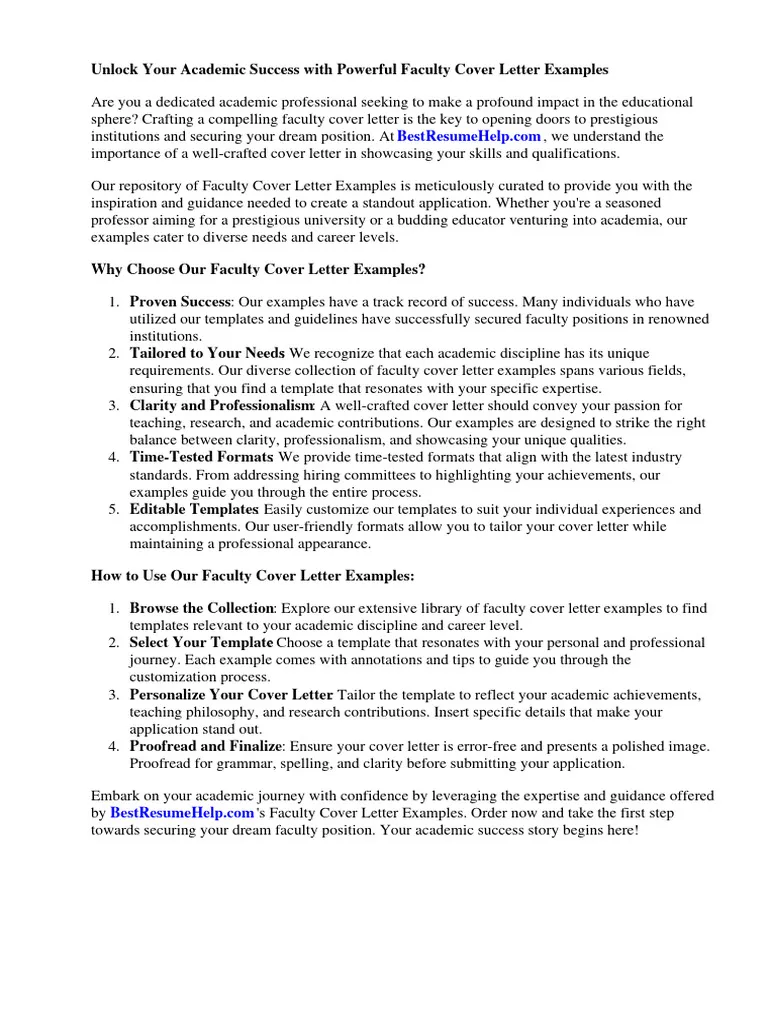
Avoiding common mistakes is just as important as highlighting your strengths. Certain practices can immediately disqualify your application. Being aware of these pitfalls will help you to create a more polished and effective cover letter.
Common Mistakes to Dodge
Avoid common mistakes that can harm your chances of getting an interview. Do not simply repeat your CV. The cover letter should complement your CV, providing context and elaborating on your experiences. Do not use generic language or templates. Always tailor your letter to the specific position and institution. Avoid typos, grammatical errors, and poor formatting. These errors indicate a lack of attention to detail and can reflect poorly on your candidacy. Avoid being overly formal or using jargon that may not be familiar to all readers.
Overused Phrases and Clichés
Refrain from using overused phrases and clichés that can make your cover letter sound generic. Avoid phrases like “I am a highly motivated individual” or “I am a team player.” Instead, use specific examples to demonstrate your qualities. Show, don’t tell. Replace clichéd expressions with original language that reflects your unique personality and experiences. This will make your cover letter stand out and demonstrate your individuality.
Closing Your Cover Letter Effectively
The conclusion of your cover letter is your final opportunity to make a positive impression. A strong closing reiterates your interest in the position, expresses your gratitude, and provides the necessary contact information.
Expressing Your Interest and Gratitude
In your closing paragraph, restate your interest in the faculty position and reiterate your enthusiasm for the opportunity. Thank the search committee for their time and consideration. Express your eagerness to learn more about the position and the department. A clear and concise closing paragraph leaves a positive lasting impression.
Providing Contact Information
Provide your contact information, including your email address and phone number, in your closing. This makes it easy for the search committee to contact you for an interview or to request further information. Ensure your contact information is current and professional. A well-formatted closing ensures the committee can easily reach you.
